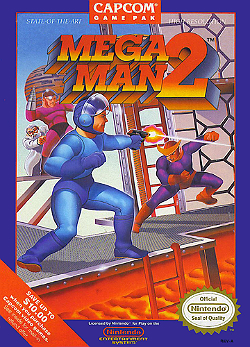
Mega Man 2 is an action game developed and published by Capcom for the Nintendo Entertainment System. It was released in Japan in 1988 and in North America and PAL regions the following years. Mega Man 2 continues Mega Man's battle against the evil Dr. Wily and his rogue robots. It introduced graphical and gameplay changes, many of which became series staples.
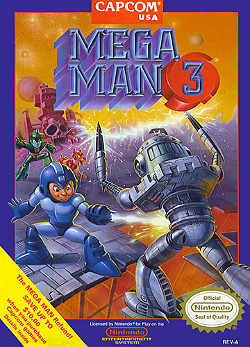
Mega Man 3 is an action-platform video game developed and published by Capcom for the Nintendo Entertainment System. It is the third game of the original Mega Man series and was originally released in Japan on September 28, 1990. The game was released in North America later in 1990 and in European regions by Nintendo in 1992. Taking place after the events of Mega Man 2, the plot follows the titular hero as he helps his creator, Dr. Light, and a supposedly former enemy, Dr. Wily, collect parts for a peace-keeping robot by defeating several Robot Masters that have gone haywire.
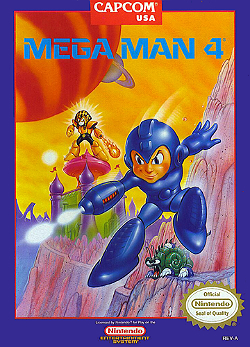
Mega Man 4 is an action-platform game developed by Capcom for the Nintendo Entertainment System. It is the fourth game in the original Mega Man series and was originally released in Japan in 1991. The game was localized in North America the following January, and in Europe in 1993.

Mega Man 5 is an action-platform video game developed by Capcom for the Nintendo Entertainment System. It is the fifth game in the original Mega Man series and was released in Japan on December 4, 1992. It saw a release during the same month in North America and in 1993 in Europe.

Mega Man Legends 2 is an action-adventure game released by Capcom in 2000, acting as the sequel to Mega Man Legends. It was released for the PlayStation in 2000 for Japan and North America, and 2001 in Europe. Unchanged Japanese ports of the game were also released for the PC in Japan and parts of Asia in 2003 and for the PlayStation Portable in 2005. The game features Mega Man Volnutt's quest to find four keys hidden in the planet in order to aid in the search of the Mother Lode, a legendary treasure thought to be an infinite energy source.

Keiji Inafune is a Japanese video game producer, illustrator and businessman. In 2009, he was chosen by IGN as one of the top 100 game creators of all time.

X is a character and protagonist of Capcom's Mega Man X video game series, known as Rockman X in Japan. First appearing in the 1993 Super NES video game Mega Man X, X is an android member of the Maverick Hunters, a special police force tasked with defending humans and Reploids against criminal Reploids known as Mavericks. X has made additional appearances in the Mega Man franchise, including printed adaptations of the series, an original video animation called Day of Sigma which explores his early days as a Hunter, and as a supporting character in the Mega Man Zero and Mega Man ZX video game series which star his Hunter comrade Zero. X has also appeared in multiple crossover video game series outside of the franchise.
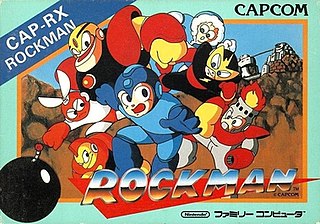
Mega Man, known as Rockman in Japan, is a platform game developed and published by Capcom in 1987 for the Nintendo Entertainment System. It was directed by Akira Kitamura, with Nobuyuki Matsushima as lead programmer, and is the first game of the Mega Man franchise and the original video game series. Mega Man was produced by a small team specifically for the home console market, a first for Capcom, which previously focused on arcade video games.

The Servbot, known as Kobun (コブン) in Japan, is a type of fictional sentient robot that appears in an assortment of video games and associated media developed and published by Capcom. The Servbot originated in the 1997 title Mega Man Legends, and appears in all media within the sub-series of the same name. Within series fiction, Servbots are a group of childlike robots who follow their creator, the pirate Tron Bonne, as her loyal but incompetent henchmen. The Servbots serve as a source of comic relief for the majority of their appearances.

Mega Man X is an action-platform game developed and published by Capcom for the Super Nintendo Entertainment System. It was the first Mega Man game for the 16-bit console and the first game in the Mega Man X series, a spin-off to the original Mega Man series that began on the Super NES's predecessor, the Nintendo Entertainment System. Mega Man X was released in Japan on December 17, 1993 and was released in both North America and Europe the following year. Taking place a century after the original Mega Man series, Mega Man X is set in a futuristic world populated by both humans and "Reploids", robots capable of thinking, feeling, and growing like their human creators. Because of these complex attributes, many Reploids are prone to destructive, renegade activity and are thereafter referred to as "Mavericks". The plot of the game follows the protagonist X, an android member of a military task force called the "Maverick Hunters". With the help of his partner Zero, X must thwart the plans of Sigma, a powerful Maverick leader wishing to bring about human extinction.

Mega Man X2, known as Rockman X2 (ロックマンX2) in Japan, is a video game developed by Capcom for the Super Nintendo Entertainment System (SNES). The game was released in Japan on December 16, 1994, and in North America and PAL regions in 1995. It is the direct sequel to Mega Man X, released one year prior. Mega Man X2 takes place in the near future in which humans try to peacefully coexist with intelligent robots called "Reploids", with some of the Reploids going "Maverick" and threatening daily life. The plot follows the android protagonist X, a "Maverick Hunter" who has saved humanity from the evil Sigma six months earlier. A trio of Mavericks calling themselves the "X-Hunters" has arisen, intent on destroying X by luring him with bodyparts of his comrade Zero, who died in the conflict with Sigma's right hand robot named Vile.

The Misadventures of Tron Bonne is an action-adventure game that was developed and published by Capcom for the PlayStation. Released in Japan in 1999 and in North America and Europe in 2000, the game is part of the Mega Man Legends series. It is also a prequel and spin-off of the first Legends game.

Mega Man III is an action-platform video game by Capcom for the Nintendo Game Boy. It is the third game in the handheld version of the Mega Man series. The game follows the title character Mega Man as he fights the evil Dr. Wily, whose latest attempt to conquer the world involves sucking energy from the Earth's core to power a new machine. Along with foes from his past, Mega Man must contend with the next robot in Wily's line of "Mega Man Killers", Punk. Like its two consecutive predecessors on the Game Boy, the game combines elements from two previously released Nintendo Entertainment System (NES) titles: Mega Man 3 and Mega Man 4. In 2013, Mega Man III was made available on the Virtual Console of Japan's Nintendo eShop for the Nintendo 3DS. It was later released in the North American and PAL region eShops the following year.
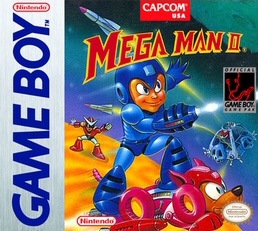
Mega Man II is an action-platform video game by Capcom for the Game Boy. It is the second game in the handheld version of the Mega Man series after Mega Man: Dr. Wily's Revenge. It is noteworthy for having been developed by a different company than the rest of the Mega Man titles on the Game Boy.

Mega Man: Dr. Wily's Revenge, also known as Mega Man in Dr. Wily's Revenge or in Japan as Rockman World is an action-platform video game by Capcom for the Nintendo Game Boy. It is the first game in the handheld series of the Mega Man franchise. It was released in Japan on July 26, 1991, and was localized in North America that December and in Europe the following year. The game continues the adventures of the android hero Mega Man as he once again confronts the evil Dr. Wily, who has dispatched his revived "Robot Masters" and a new "Mega Man Killer" named Enker.
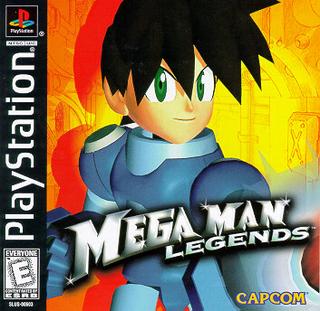
Mega Man Legends is an action-adventure shooter game released by Capcom. It is the first game in the Mega Man Legends sub-series of Mega Man games from Capcom, and the second major 3D polygonal Mega Man title released in the franchise, following Mega Man: Battle & Chase. It was released for PlayStation in 1997 in Japan, and in 1998 in North America. A Nintendo 64 port was released in 2000 with the same title, but it was renamed Mega Man 64 for the North American release in 2001. It was also ported to Windows in 2001, and PlayStation Portable in 2005, the latter only in Japan. It was last released as a PS one Classic through North American PlayStation Network in 2015.

Mega Man Powered Up is a side-scrolling platform video game developed and published by Capcom. It was released for the PlayStation Portable (PSP) handheld game console in March 2006. It is a remake of the original Mega Man game released in 1987 for the Nintendo Entertainment System (NES). Players control the eponymous star Mega Man who must stop Dr. Wily from conquering the world using eight robots called Robot Masters. Unlike the original game, players can control these eight Robot Masters under the right circumstances. Other new features include a level creator mode and a challenge mode.

Mega Man, known as Rockman in Japan, is the title character and the protagonist of the Mega Man series by Capcom. He was created by Akira Kitamura for the first Mega Man game released in 1987, with artist Keiji Inafune providing detailed character artwork based on Kitamura's pixel art design.

Mega Man Legends 3 is a cancelled video game set to be the sequel to Mega Man Legends 2 and the fourth game in the Mega Man Legends series. It was announced for the Nintendo 3DS on September 29, 2010, during a Nintendo press conference for the 3DS.



















